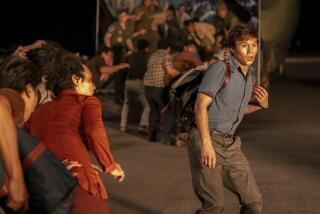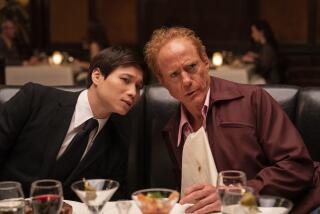Cambodian sisters cross a divide of years, cultures
Lucky Child
A Daughter of Cambodia Reunites With the Sister She Left Behind
Loung Ung
HarperCollins: 268 pp., $24.95
*
For all of us raised on the mantra “Never again,” who assured ourselves that if only people had known what was going on in the death camps, the Holocaust could never have happened, the events that unfolded in Cambodia in the late 1970s proved a sobering, then a chastening and, finally, a devastating revelation.
The horrific atrocities perpetrated by Pol Pot’s Khmer Rouge received extensive coverage in the press, but the United States, eager to avoid further involvement in the region, did nothing. And when the genocidal nightmare was ended by the Vietnamese invasion, one American administration after another (including that of human rights champion Jimmy Carter) refused to recognize the new government and insisted on regarding the ousted Khmer Rouge regime as the legitimate one.
A child of 5 when the Khmer Rouge swept into her native city of Phnom Penh on April 17, 1975, Loung Ung lost her parents and two of her six siblings in the ensuing mass executions, forced labor, starvation and disease that killed nearly 2 million Cambodians, almost a quarter of the country’s population.
Ung told the story of her unimaginable experiences in a searing, compulsively readable 2000 memoir, “First They Killed My Father.”
When Pol Pot’s regime was defeated by the Vietnamese in 1979, Loung’s oldest brother, Meng, and his wife were determined to attempt the risky journey via Thailand to America, but were only able to afford to take one of Meng’s two surviving sisters. He chose the younger and scrappier 10-year-old Loung, who he felt would be better able to adapt to a new country and language.
Twelve-year-old Chou, the sister to whom Loung felt closest, had to remain behind in a tiny rural village with her aunt and uncle and their children. The sisters did not meet again until 15 years later, when Loung was finally able to make what would be the first of many trips back to her native land.
“Lucky Child” tells the story of Loung’s new life with her brother and his wife in Vermont and, entwined with it in alternate chapters, the story of her sister Chou’s very different life in an impoverished rural village. Both stories -- Loung’s, told in her own voice, and Chou’s, narrated in the third person -- are inherently fascinating and are recounted with a vividness and immediacy that make them even more so.
Loung’s story, at first glance, seems breezier, more lighthearted in tone, with its accounts of schoolyard squabbles and friendships and Halloween trick-or-treating. But memories, scars, grief, fear and anger are never far from the surface. Although she’s now well fed, Loung wakes at night with hunger pangs in a stomach still swollen from years of near-starvation. Fourth of July fireworks trigger flashbacks of bombings. Years later, the first sight of her own menstrual blood summons up terrifying images of violence and bloodshed.
Meanwhile, in Cambodia, Chou, raised as a city girl, finds herself living in a hut in the countryside with her uncle, aunt and cousins.
With her aunt working in the fields, the task of feeding the family falls to Chou. The hardships of Chou’s new life are graphically portrayed -- constant shortage of food, no electricity, no running water, no soap, no toilets, along with the much more lethal problems of land mines and lingering Khmer Rouge insurgents.
Thanks to the Khmer Rouge’s policy of killing doctors, nurses and teachers, school has become an elusive dream for Chou, and she must fight back tears as she watches her 3-year-old cousin die from lack of modern medical care.
The chapters set in Cambodia not only offer a powerfully realistic portrait of rural life, but also reveal Chou’s gentle, courageous, uncomplaining nature as she enters this world of ancient traditions, folk medicine and arranged marriages.
Back in America, observing the fuss made over a child’s minor mishap in a swimming pool, Loung is overwhelmed by sudden rage. Why are these people making such a to-do over nothing, she wonders: “The boy was in the water for seconds,” she wants to scream. “There was no real pain or danger. Yet you all reached out to him. I was drowning for years and where were you?!!”
Where indeed? Grateful as Loung is for the help and support she’s received from her American sponsors and others who’ve befriended her and her family, she still struggles under the crushing burden of the horrors she’s witnessed and the losses she’s experienced.
Amazingly, however, Loung, Chou and the other surviving members of their family are somehow able to move beyond their more than justified anger to lead useful and loving lives. Written with an engaging vigor and directness, “Lucky Child” is an unforgettable portrait of resilience and largeness of spirit.
*
Merle Rubin is a contributing writer to Book Review.


